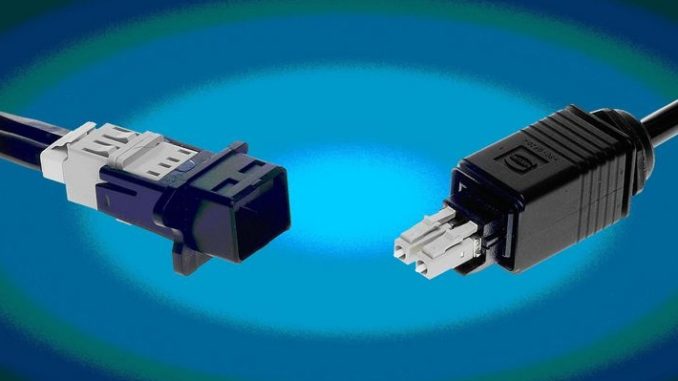
Nowadays, with the development of technology, broadband has multiple access methods to the user side. The most important ones are fiber optic and adsl. What is the difference between optical fiber and adsl? Which fiber and adsl are better?
In addition to optical fiber and ADSL, commonly used access methods include VDSL, FTTB+LAN, wireless access, and power supply cat access. The access method is not directly related to the bandwidth requested. Next, I will talk to you about the difference between fiber and ADSL and which one is better.
Introduction to fiber
The optical fiber transmits signals in the form of optical pulses and is a transmission medium such as glass or plexiglass. It is a transmission medium, like twisted pair, thick cable, thin cable, etc., but his transmission speed is higher than ordinary. The media is much faster and can reach more than a gigabit per second.
Introduction to ADSL
ADSL is an asynchronous transmission mode. Because the uplink and downlink bandwidths are asymmetric, it is called an asymmetric digital subscriber line loop. At the telecommunications service provider side, each telephone line that opens the ADSL service needs to be connected to the digital subscriber line access multiplexer. On the user side, the user needs to use an ADSL terminal (cat) to connect to the telephone line. Since ADSL uses high-frequency signals, the ADSL signal splitter must be used to separate the ADSL data signal from the normal audio telephone signal at both ends to avoid noise interference when making a call.
The difference between fiber and ADSL
1. The current broadband is basically divided into fiber access and ADSL access. ADSL currently has a maximum transmission capacity of 10M, and fiber has no such limitation.
2. ADSL is transmitted by cable through electricity. The optical fiber is transmitted by light through an optical cable. The speed of light propagation is faster than that of electricity. Moreover, the bandwidth of optical fiber broadband is larger than that of ordinary broadband, and the download speed is far superior to ordinary broadband.
3. From the technical point of view, ADSL is a good transition technology, the optical fiber is a relatively complete technology, which is a true broadband technology.
4. Fiber-optic broadband networking equipment has low cost, low investment, and low cost. ADSL utilizes the existing telephone network of the city’s telephone network and telephone exchange, and cannot be separated from the fixed telephone. It is subject to geographical restrictions, and the telephone bill also increases the cost.
5, ADSL has a general quality requirement for the line, and when the line is not good, it will affect the stability. The optical fiber has high network stability and high reliability.
6, access method. Fiber-optic broadband is the fiber-to-the-building network to the home, and ADSL is the ordinary telephone twisted pair. The access of LAN users is simpler. Routers, switches, and even ordinary network cards can be used for access. The user end uses five types of network lines to access, plug and play. The line quality is also better.
7. ADSL can support Internet/Extranet/Intranet services, voice services, video services, ATM services, data services, Frame Relay FR access services, and VPN virtual private network services, enabling inter-network interconnection, information sharing, and mutual access. transfer. The FTTX+LAN method covers all ADSL all services and functions on the basis of existing ADSL. FTTX+LAN helps to establish an intelligent community broadband network system, which integrates the home terminal and the property management platform into an overall local area network and provides support for various online value-added services for property management.
8, fiber-optic Internet access, in fact, is the fiber-optic + LAN broadband community, the fiber reaches the building, through the photoelectric switch, the optical signal into electrical signals, with Category 5 cable (generally said network cable) to the user’s home, connected to the computer The account number and password will be available.
ADSL broadband transmits data signals through a telephone line distributed to the home. The voice and data signals in the electrical signal are separated by a splitter. The voice signal is connected to the telephone, the data signal is connected to the broadband cat, and the cat passes through a Category 5 network cable. Connected to the computer, the rest is the same.
9. If the network speed is increased to Gigabit in the future, ADSL, VDSL, fttb+lan, and wireless access methods will not meet the demand. The optical fiber can meet the requirements. It is only necessary to replace the equipment on both sides to replace the 100-megabit device with 1000 megabytes. That’s it.
10, ADSL suitable for personal home entertainment, small-scale enterprises without complex Internet applications. Fiber is suitable for all corporate users.
Which fiber and ADSL are better?
The optical fiber is the most ideal one among multiple transmission media in broadband networks. It is characterized by large transmission capacity, good transmission quality, low loss, long relay distance, balanced upload, and download rates, and can use fixed IP addresses. Restricted, you can upgrade the maximum traffic value of broadband according to the different needs of users. However, the cost is relatively high compared to ADSL, and no ADSL is more stable, so many Internet cafes and other places still use ADSL more. So for the fiber and ADSL which is good, can only say that they have their own advantages and disadvantages, it depends on how you use it.
So everyone should have their own understanding of the difference between optical fiber and ADSL and which good question, I hope that the introduction can help everyone.